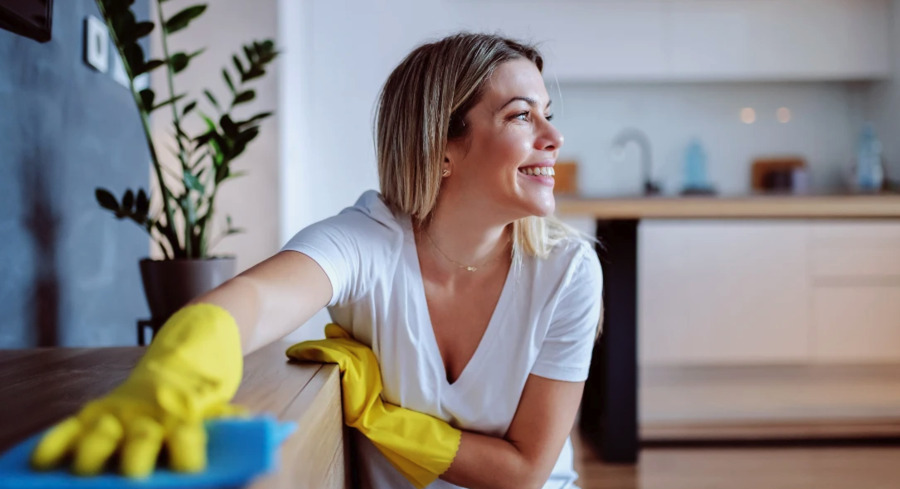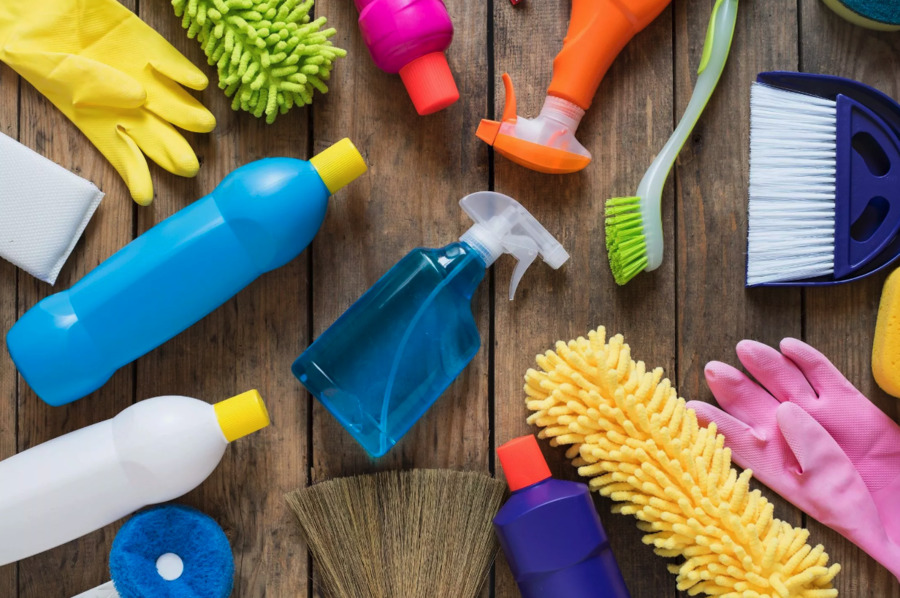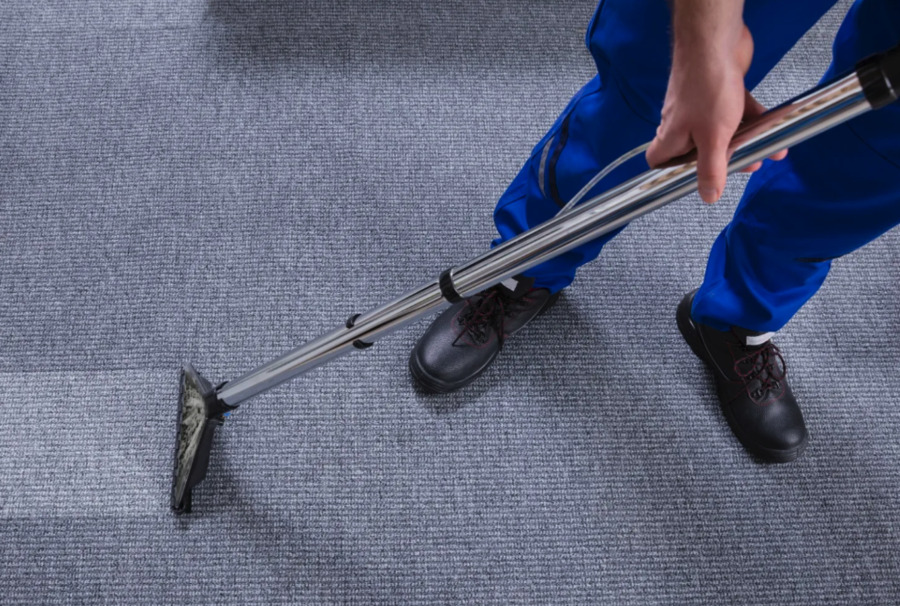Indoor cleaning is a vital activity that not only enhances the visual appeal of an environment but also upholds its hygienic standards. This task is essential in preventing the accumulation of dust, allergens, and pathogens that can affect health. To effectively manage and maintain cleanliness within various settings, cleaning activities are classified into different types based on the frequency and the depth of cleaning required. Here, we explore the three primary types of indoor cleaning and delve deeper into the methods and tools used for each.
Types of Indoor Cleaning
Daily Cleaning
Daily cleaning is typically scheduled either before the day begins or after it ends, allowing for uninterrupted daily activities. This cleaning routine involves a set series of actions aimed at maintaining the general cleanliness of the environment. Tasks may include dusting furniture, sweeping floors, vacuuming carpets, wiping down desks and countertops, and sanitizing bathroom fixtures. This routine is crucial in high-use areas like office spaces and educational facilities, where cleanliness impacts the overall work and learning atmosphere.
Maintenance Cleaning
Maintenance cleaning targets immediate cleaning needs that arise throughout the day and is crucial in maintaining a continuously clean environment. This type of cleaning is dynamic and responsive, focusing on areas that are frequently used and prone to dirt accumulation during operational hours. It includes cleaning up food spills in cafeterias, wiping down surfaces in meeting rooms after use, and managing debris in entryways and corridors. The promptness of maintenance cleaning is essential in places like hospitals and restaurants where hygiene is paramount.
General Cleaning
Scheduled less frequently, general cleaning is the most comprehensive, encompassing areas often overlooked during routine cleaning. This deep clean involves moving furniture to clean underneath, dusting high ledges and ceiling fans, cleaning air vents, and shampooing carpets. It’s designed to combat the buildup of grime and dust that regular cleaning might not address, playing a crucial role in the long-term maintenance and upkeep of the property, prolonging the life of fixtures and fittings, and ensuring a deeper level of hygiene.

Methods of Cleaning
Cleaning methods are broadly categorized based on the nature and intensity of the cleaning process, each suited to different types of dirt and surfaces:
Dry Cleaning
Dry cleaning focuses on removing dust and loose debris without using water. This method is crucial for preserving materials that are sensitive to moisture, such as hardwood floors and certain types of upholstery. Techniques include using dust mops, static cloths, and vacuum cleaners. This approach is particularly important in areas containing electronics and valuable art, where moisture could cause damage.
Wet Cleaning
Wet cleaning is the most common method for tackling ingrained dirt and residues. It involves the use of water and often a cleaning agent, which might be a soap or a specialized solvent. Techniques include scrubbing, mopping, and the use of wet vacuums. This method is particularly effective in bathroom areas and kitchens where sanitization is crucial, helping to remove microbial contamination and food residues that attract pests.
Cleaning with Light Chemicals
This method uses mild chemical solutions to enhance the cleaning power of physical methods. Suitable for both residential and commercial environments, this approach is often used to tackle tougher stains that water alone cannot remove, such as coffee spills on carpets or grease on kitchen stoves. The chemicals used are designed to be safe on the cleaning surfaces and for the occupants of the space.
Deep Cleaning
Deep cleaning is an intensive cleaning operation that targets the deep grime and dirt that accumulates over time. It includes steam cleaning, the use of heavy-duty scrubbers, and detailed cleaning of all nooks and crannies. This type of cleaning is especially important in healthcare settings and the food service industry, where a high level of sanitation is necessary to meet regulatory standards and protect public health.
Cleaning Locations
Indoor cleaning covers a wide array of environments, each with its specific requirements:
– Dwellings: Residential cleaning focuses on areas like living rooms, bedrooms, kitchens, and bathrooms. It involves tasks tailored to the needs of the residents, considering factors like pets, children, and allergies.
– Office Buildings: These spaces require a systematic approach to cleaning, addressing high-traffic areas like lobbies, offices, conference rooms, and employee break rooms. Regular cleaning in these areas helps to maintain a professional appearance and supports a productive working environment.
– Public Places: This includes a broad spectrum of locations such as schools, hospitals, shopping malls, and transport hubs. Cleaning in public spaces is crucial not just for aesthetics but also for public health, requiring stringent standards and frequent attention.

Cleaning Tools
The tools used for cleaning play a pivotal role in the effectiveness of cleaning operations and are divided into manual and automatic categories:
Manual Tools
Manual cleaning tools, such as brooms, brushes, mops, and cloths, are the backbone of cleaning. They are adaptable to various surfaces and are essential for detailed cleaning tasks. However, they require significant human effort, which can be time-consuming, especially in larger spaces.
Automatic Tools
Automatic tools include devices like robotic vacuums, electric scrubbers, and steam cleaners. These tools significantly reduce human labor, improve cleaning efficiency, and are particularly useful in maintaining large commercial spaces. They provide consistent results and can be programmed to suit specific cleaning needs, from light daily cleaning to deep cleaning sessions.
Conclusion
Understanding the different types of housekeeping and the appropriate methods and tools is crucial to maintaining an effective cleaning regime. Whether in homes, offices or public spaces, the right approach to cleaning ensures a clean, safe and hygienic environment, raising aesthetic and sanitary standards.
If you are in the UAE and have decided to start a cleaning company or need to provide your company’s employees with the necessary cleaning equipment, contact Al Nojoom Cleaning Equipments, a leading company in the supply of such equipment. Al Nojoom Cleaning Equipments can help you with the equipment, whether it is a mop or a professional vacuum cleaner or special cleaning products.
“Everyone has to find what is right for them, and it is different for everyone. Eating for me is how you proclaim your beliefs three times a day. That is why all religions have rules about eating. Three times a day, I remind myself that I value life and do not want to cause pain to or kill other living beings. That is why I eat the way I do.” -Natalie Portman
